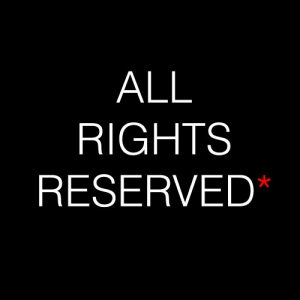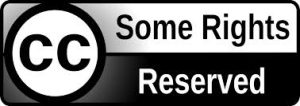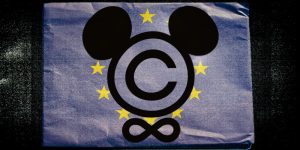8 History
Learning Objectives
- Understand the history of Creative Commons & CC licenses
Author Rights
All Rights Reserved

Copyright Law grants All Rights Reserved permission to authors. The law protects unlawful re-use of works. Creative works by default are stamped with an All Rights Reserved copyright held by the original creator and author of any original work. While this protects authors and helps prevent unlawful use of their works, it is at odds with the nature of our work today: with technology and tools that facilitate sharing through the Internet, social media, cloud networks, and more.

Creative Commons Author Rights
Creative Commons licenses, on the other hand, answer clearly for re-users: “What can I do with this?” while still crediting the author and preserving their rights.
Copyright Term Extension Act

The Sonny Bono Copyright Term Extension Act (CTEA) became a part of U.S. Copyright Law in 1998; it extended authors’ copyright from the life of the author plus 50 years to the life of the author plus 70 years. Once this time has passed, the works enter the Public Domain, are considered public knowledge, and can be drawn from without permission from the original author. The CTEA was viewed as too restrictive by some, as it hampered use of works even further, creating more of a monopoly on the use of the original work when the intent of Copyright Law was to prevent a monopoly by the author.
Legal History
Lawrence Lassig, a Stanford University law professor, an opponent of the CTEA, represented Eric Eldred, a web publisher in Eldred vs Ashcroft. The case went to the U.S. Supreme Court and lost .
While Eldred lost the case, the dilemma still existed: The Internet, social media, and technology in general all create an environment rich with opportunities for sharing, re-using, remixing. How can authors grant others permission to re-use their work? Can we create a path for authors that enables sharing and paves the way for building upon original works sooner rather than later?

Founding
Enter Creative Commons, a nonprofit founded in 2002 with the intent of enabling the sharing of original works .The intent behind Creative Commons licenses is to provide a way to facilitate sharing of works created with the intent to be re-used and modified. These licenses give authors more flexibility in the decisions around Some Rights Reserved while still honoring and protecting their rights.
Creative Commons Today

Today, authors have applied Creative Commons licenses to more than 1.6 billion of their works that are online and have hosted them on a combined total of over 9 million websites Authors that apply Creative Commons licenses are setting knowledge and information free, enabling society to share, advance and build upon that collective knowledge . They’re also supporting advancement of society rather than monopolizing information, which stagnates societal growth.
The Creative Commons has many chapters throughout the global community; chapters are centered around shared communities and their interests.. Some of the larger communities where Creative Commons work is happening are GLAM (Galleries, Libraries, Archives, and Museums), Communities Activity, Copyright, and Open Education. Open advocates and those involved in work in the Open Community can browse chapters by region to get involved in an area of work that will benefit their communities and networks.
Attribution
This chapter “History” is licensed under a Creative Commons Attribution 4.0 International License and is a derivative of the September 2020 Creative Commons Certificate Course by Creative Commons, also licensed CC BY 4.0. DeeAnn Ivie adapted content from the Creative Commons Certificate Course adding it to the “History” chapter in the OER Toolkit: For UTSA Faculty, Instructional Designers & Librarians.
Media Attributions
- All Rights Reserved © no3rdw is licensed under a CC BY (Attribution) license
- Some Rights Reserved © Leondardo Alvarez is licensed under a CC BY-NC (Attribution NonCommercial) license
- Europe Infinite Copyright © Mataparda is licensed under a CC BY (Attribution) license
- Reflexology Path © alantankenghoe is licensed under a CC BY (Attribution) license
- Earth 2009 © Kevin M. Gill is licensed under a CC BY (Attribution) license

